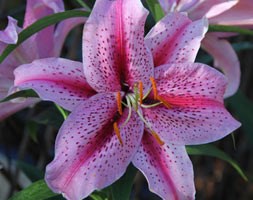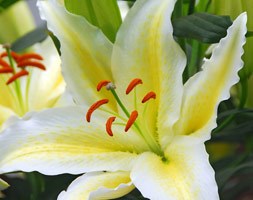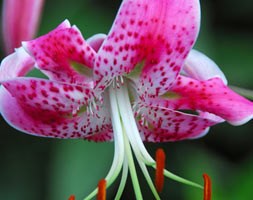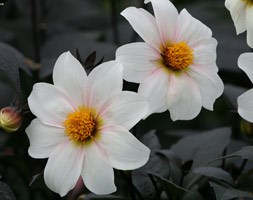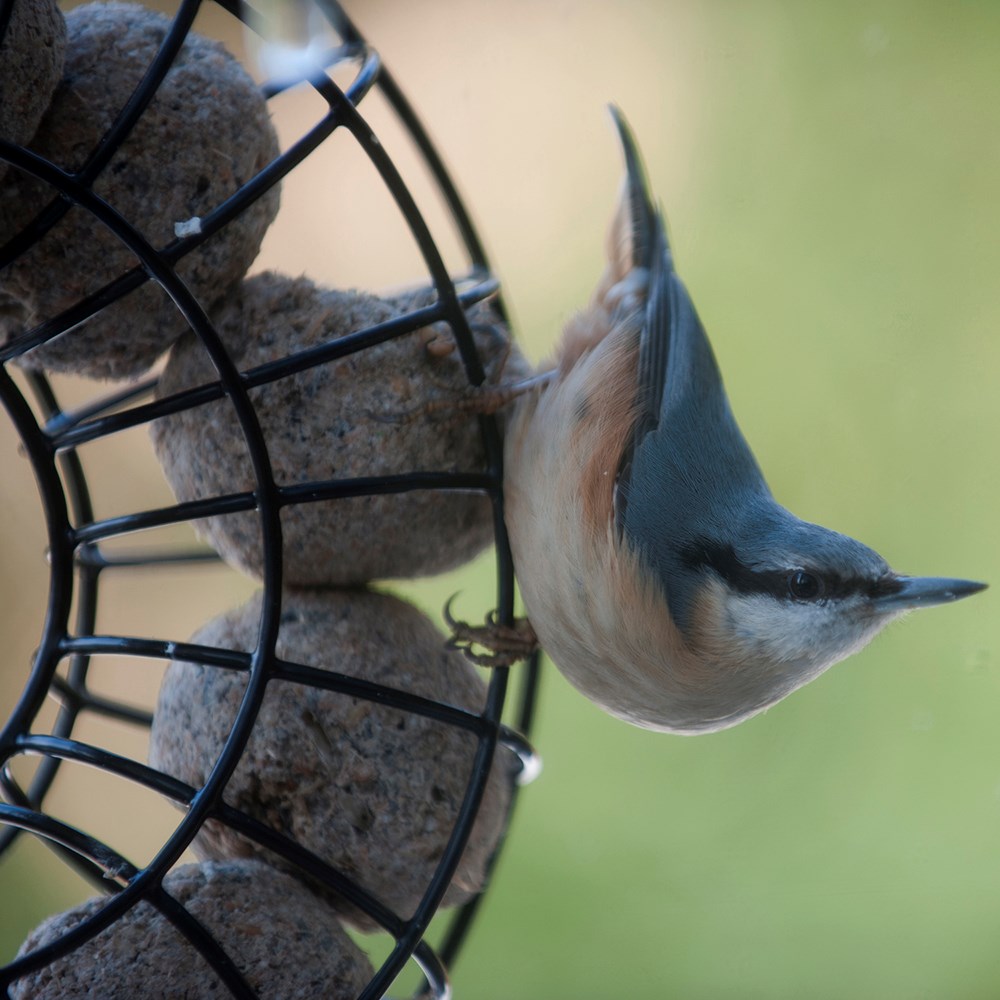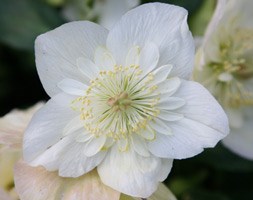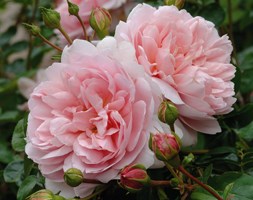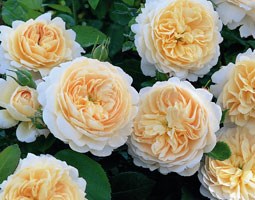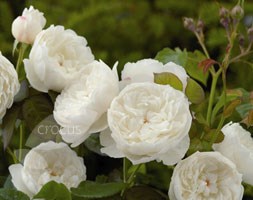Price reductions at Crocus
by Sarah - April 4th, 2014.Filed under: Crocus, Price Reductions.
Crocus reduced the price on these products today
Lilium ‘Tiger Edition’ (oriental lily) was £2.99 now £1.99
Position: full sun Soil: well-drained soil enriched with leaf mould or a loam-based potting compost, such as John Innes no2 Rate of growth: average Flowering period: July to August Flower colour: rich pink and pink Other features: excellent cut-flowers Hardiness: fully hardy Lavishly speckled and streaked petals form large (up to 15cm across), highly scented flowers in midsummer. These look magnificent in the border and if cut will fill your home with their perfume. An elegant and eye-catching lily that performs well in the garden. Garden care: Lilies can be planted at any time from early autumn, to mid-spring. Planting in autumn often helps them settle in and become better established before they start to put on their new spring growth, but spring planting is a better option if your soil is heavy and wet during winter. Choose a sunny spot, preferably where the plant receives a little light shade at its base, and plant each bulb 15-20cm (6-8in) deep in a well-drained soil, enriched with well-rotted organic matter or leaf mould. Space them at approximately 30cm (12″) intervals and provide support before the flowers appear. Deadhead the faded blooms promptly and cut the dead stems back to ground level at the end of autumn.
Lilium ‘Chill Out’ (Skyscraper lily) was £2.99 now £2.49
Position: full sun with light dappled shade at its base Soil: fertile, reliably moist soil Rate of growth: fast-growing Flowering period: July Flower colour: white and yellow Hardiness: fully hardy The huge flowers of this gorgeous, scented lily are mainly white, but each petal has a broad lemon yellow blotch in the centre. A florists favourite, these flowers last well after being cut and look very impressive in arrangements. Garden care: Lilies can be planted at any time from early autumn, to mid-spring. Planting in autumn often helps them settle in and become better established before they start to put on their new spring growth, but spring planting is a better option if your soil is heavy and wet during winter. Choose a sunny spot, preferably where the plant receives a little light shade at its base, and plant each bulb 15-20cm (6-8in) deep in a well-drained soil, enriched with well-rotted organic matter or leaf mould. Space them at approximately 30cm (12″) intervals and provide support before the flowers appear. Deadhead the faded blooms promptly and cut the dead stems back to ground level at the end of autumn.
Lilium speciosum var. rubrum (lily bulbs) was £3.99 now £2.99
Position: partial shade Soil: moist, acidic soil Rate of growth: fast-growing Flowering period: July to August Flower colour: deep carmine-red Hardiness: fully hardy In late summer and early autumn sprays of large, fragrant, deep carmine-pink flowers with purple-brown stems are produced. The flowers are usually pendant and similar to a turkscap lily, although larger. This lily needs moist, acid soil in partial shade to thrive, so is perfect for naturalising in woodlands. Garden care: Lilies can be planted at any time from early autumn, to mid-spring. Planting in autumn often helps them settle in and become better established before they start to put on their new spring growth, but spring planting is a better option if your soil is heavy and wet during winter. Choose a sunny spot, preferably where the plant receives a little light shade at its base, and plant each bulb 15-20cm (6-8in) deep in a well-drained soil, enriched with well-rotted organic matter or leaf mould. Space them at approximately 30cm (12″) intervals and provide support before the flowers appear. Deadhead the faded blooms promptly and cut the dead stems back to ground level at the end of autumn.
Dahlia ‘Twyning’s After Eight’ (dahlia tuber) was £3.49 now £2.99
Position: full sun Soil: fertile, humus-rich soil Rate of growth: average Flowering period: July to September Flower colour: white with a soft pink flush Other features: excellent cut-flowers Hardiness: half hardy (may need winter protection) A decorative form that forms attractive mounds of deep purple foliage, which looks almost black in certain lights. From mid summer until the first frosts, this is topped with branching, upright stems, carrying single, near flowers. The contrast is superb and will add real interest to the border. Alternatively, pot it up and place it on the patio, wher it will add a colourful splash for many months of the year. This is a cracking dahlia, that has been given the prestigeous Award of Garden Merit from the Royal Horticultural Society. Garden care: Dahlia tubers can be planted outside after frost, or started off in pots under glass in late winter to early spring. Plant them horizontally approximately 12cm deep, making sure the ‘eyes’ are uppermost. Allow enough room between each tuber so the plants can grow and spread to their full size without being over-crowded. While in growth, provide a high-nitrogen liquid feed each week in June, then a high-potash fertiliser each week from July to September. Stake with canes or brushwood if it becomes necessary. In mild areas, leave them in situ over winter, but protect the crown with a generous layer of dry mulch. In colder areas, carefully lift and clean the tubers once the first frosts have blackened the foliage and allow them to dry naturally indoors. Then place the dry tubers in a shallow tray, just covered with slightly moist potting compost, sand or vermiculite and store in a frost-free place until planting out again.
Fat snax feeder ring was £7.99 now £4.99
This fat snax feeder ring is ideal for attracting blue tits, great tits, coal tits, long tailed tits, starlings, robins and other species. Holds the suet balls of the fat snacks. Holds up to 8 Fat Snax Diameter: 25cm All metal cage
Helleborus niger Harvington hybrids double-flowered (Christmas rose hellebore) was £14.99 now £11.99
Position: partial shade Soil: heavy, neutral to alkaline soil Rate of growth: average Flowering period: January to February Flower colour: white Other features: all parts of the plant cause severe discomfort if ingested; the sap may cause skin irritation Hardiness: fully hardy Gorgeous, double white, bowl-shaped flowers from January to February (occasionally earlier) and clumps of leathery, dark green leaves. This pretty Christmas rose looks great planted in bold groups towards the front of a partially shady mixed border. Although it prefers a heavy, neutral to alkaline soil, once established it will tolerate drier conditions. Garden care: Add lots of well-rotted leaf mould or organic matter to the planting hole. Apply a generous 5-7cm (2-3in) mulch of well- rotted organic matter around the base of the plant in autumn and provide a top-dressing of general fertiliser each spring. Please note: Delivery before Christmas can only be guaranteed if ordered by December 20th
Rosa Wildeve (‘Ausbonny’) (PBR) (rose Wildeve (hybrid musk)) was £17.99 now £12.99
Position: full sun Soil: fertile, humus-rich, moist, well-drained soil Rate of growth: average Flowering period: June and September Flower colour: pink Other features: excellent cut flowers Hardiness: fully hardy Masses of soft pink buds open to freshly fragrant, rosette shaped, pink blooms that have a soft apricot flush in summer. A particularly robust and healthy shrub, its has long, arching stems that can be tied to a pillar or allowed to spread and form a billowing mound. All our roses are grown in an open field and then dug up when the weather conditions are right in October or November. Some suppliers send out their roses as ‘bare root’ plants (ie without pots or compost), but we pot ours up as it helps to keep the roots hydrated and in good condition. As they are dormant throughout the winter, they will not produce any new roots until spring, so don’t be surprised if the compost falls away from the roots when you take them out of their pots. The roses can be kept in their pots throughout the winter provided they are kept well fed and watered, however ideally they should planted out as soon as possible. They will already have been cut back so no further pruning will be required, apart from snipping off any tips that have died back. Routine pruning can begin in late winter the year after planting. Garden care: If planting in winter, choose a frost-free spell when the soil is not frozen. Roses are quite deep-rooted plants so dig a deep hole roughly twice as wide as the plants roots and mix in a generous amount of composted organic matter. A top-dressing of a general purpose fertiliser can be worked into the surrounding soil and we also recommend using Rose Rootgrow at this stage to encourage better root development. This is particularly important when planting into a bed where roses have previously been grown as Rose Rootgrow is said to combat rose sickness (aka. replant disease). Remove the plants from their pots and gently spread out the roots before placing them in the centre of the hole. Try to ensure that the ‘bud union’ (the point where the cultivated rose has been grafted onto the rootstock, and from where the shoots emerge) is at soil level. You can judge this quite easily by laying something flat, like a spade handle or bamboo cane, across the top of the hole. When they are at the right height, back-fill the hole, firming the soil down gently before watering the
Rosa Crocus Rose (‘Ausquest’) (PBR) (rose Crocus Rose (shrub)) was £17.99 now £12.99
Position: full sun Soil: fertile, humus-rich, moist, well-drained soil Rate of growth: fast-growing Flowering period: July and September Flower colour: soft apricot turning to soft cream Other features: excellent cut-flowers Hardiness: fully hardy An excellent variety with attractive rounded growth. The colour is a lovely soft apricot with pale cream outer petals, turning to soft cream as the flower ages. It has a delightful tea fragrance and is very free flowering. All our roses are grown in an open field and then dug up when the weather conditions are right in October or November. Some suppliers send out their roses as ‘bare root’ plants (ie without pots or compost), but we pot ours up as it helps to keep the roots hydrated and in good condition. As they are dormant throughout the winter, they will not produce any new roots until spring, so don’t be surprised if the compost falls away from the roots when you take them out of their pots. The roses can be kept in their pots throughout the winter provided they are kept well fed and watered, however ideally they should planted out as soon as possible. They will already have been cut back so no further pruning will be required, apart from snipping off any tips that have died back. Routine pruning can begin in late winter the year after planting. Garden care: If planting in winter, choose a frost-free spell when the soil is not frozen. Roses are quite deep-rooted plants so dig a deep hole roughly twice as wide as the plants roots and mix in a generous amount of composted organic matter. A top-dressing of a general purpose fertiliser can be worked into the surrounding soil and we also recommend using Rose Rootgrow at this stage to encourage better root development. This is particularly important when planting into a bed where roses have previously been grown as Rose Rootgrow is said to combat rose sickness (aka. replant disease). Remove the plants from their pots and gently spread out the roots before placing them in the centre of the hole. Try to ensure that the ‘bud union’ (the point where the cultivated rose has been grafted onto the rootstock, and from where the shoots emerge) is at soil level. You can judge this quite easily by laying something flat, like a spade handle or bamboo cane, across the top of the hole. When they are at the right height, back-fill the hole, firming the soil down gently before watering the plant well.
Rosa William and Catherine (‘Ausrapper’) (PBR) (rose William & Catherine (hybrid musk)) was £17.99 now £12.99
Position: full sun or partial shade Soil: fertile, humus-rich, moist, well-drained soil Rate of growth: fast-growing Flowering period: July to September Flower colour: soft apricot fading to white Other features: excellent cut-flowers Hardiness: fully hardy Many-petalled, bowl-shaped flowers with a delicious myrrh scent, form in clusters throughout the summer on bushy, upright plants. As the buds open the flowers initially have a soft apricot flush, but they quickly turn cream and then white, so the predominant impression is of a white rose. It has a good resistance to the main rose diseases and it makes a wonderful addition to the mixed border or rose bed. All our roses are grown in an open field and then dug up when the weather conditions are right in October or November. Some suppliers send out their roses as ‘bare root’ plants (ie without pots or compost), but we pot ours up as it helps to keep the roots hydrated and in good condition. As they are dormant throughout the winter, they will not produce any new roots until spring, so don’t be surprised if the compost falls away from the roots when you take them out of their pots. The roses can be kept in their pots throughout the winter provided they are kept well fed and watered, however ideally they should planted out as soon as possible. They will already have been cut back so no further pruning will be required, apart from snipping off any tips that have died back. Routine pruning can begin in late winter the year after planting. Garden care: If planting in winter, choose a frost-free spell when the soil is not frozen. Roses are quite deep-rooted plants so dig a deep hole roughly twice as wide as the plants roots and mix in a generous amount of composted organic matter. A top-dressing of a general purpose fertiliser can be worked into the surrounding soil and we also recommend using Rose Rootgrow at this stage to encourage better root development. This is particularly important when planting into a bed where roses have previously been grown as Rose Rootgrow is said to combat rose sickness (aka. replant disease). Remove the plants from their pots and gently spread out the roots before placing them in the centre of the hole. Try to ensure that the ‘bud union’ (the point where the cultivated rose has been grafted onto the rootstock, and from where the shoots emerge) is at soil level. You can judge this quite easily by laying some







